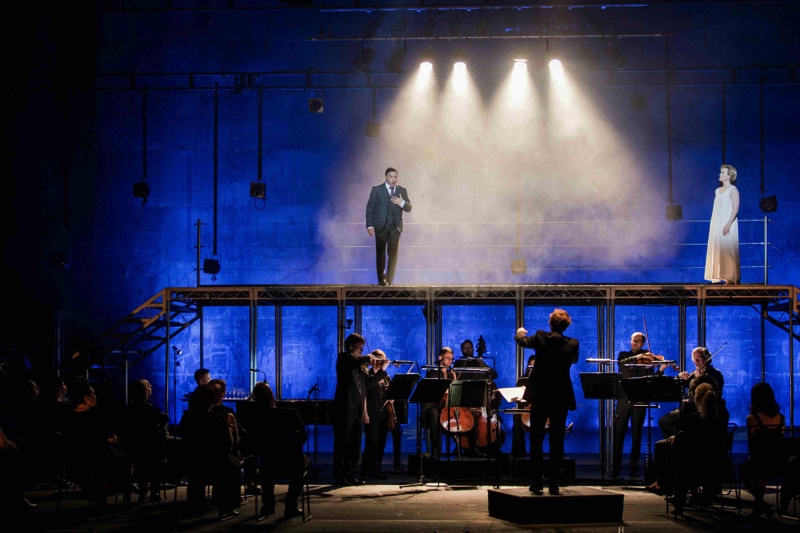Le Vin herbé, Welsh National Opera, WNO, Cardiff, February 2017 (original) (raw)
Posted on 17 February 2017
The French title (the wine infused drink) refers to the love potion shared by Tristan and Isolde, and at its first fully staged performance at the Salzburg Festival in 1948 it took the German title Der Zaubertrank (the Magic Drink).

All images WNO/ Robert Workman
Wagner’s famous Tristan und Isolde was partly inspired by his relationship with Mathilde Wesendonk while living on the Swiss estate she shared with her husband Otto, and ironically the composer of this work, Frank Martin is also Swiss. Yet it is a very different composition; Martin was writing in 1938–41 when German nationalist fervour was sweeping Europe into the abyss, and this austere composition, more oratorio than opera, approaches the story from its Celtic roots, using Joseph Bédier’s Le roman de Tristan et Isaut. The characters include Tristan, Iseult the Fair (Isolde) of Ireland, her mother, her handmaiden Brangien (Brangäne), and King Mark of Cornwall. After the lovers part, Tristan moves to Brittany, marrying Iseult of the White Hands, daughter of Duke Hoël. Lying fatally wounded after helping the Duke win a war, his companion Kaherdin (Kurwenal), sails away to bring Iseult the Fair to see him once more. But all ends in tragedy after his wife falsely reports that Iseult the Fair has not arrived with the ship. He dies before she reaches him, she dies of despair, and after King Mark buries the two bodies side by side the oratorio ends with the story of the briar that persistently reaches from one coffin to the other.

Tristan and Iseult
The story telling is accomplished largely by the chorus, like some ancient epic where a chorus or narrator introduces sung or spoken monologues, and the semi-staging by Polly Graham presents its 21 tableaux with black costumes for everyone but the lovers, whose union takes place on a gantry above the heads of the other singers. Fine singing by the chorus, along with Catherine Wyn-Rogers (the mother), Rosie Hay (Brangien), and others, with a very strong Tristan by Tom Randle and a superb performance by Caitlin Hulcup as Iseult the Fair.
When Martin first created his ‘secular oratorio’ he intended a relatively short work but as his enthusiasm grew it expanded to nearly two hours — performed here without an interval — and the listener will find imagery from other well-known tales. The choice of black or white sails for the ship bringing Iseult the Fair recalls their use by Theseus as he returns home after battling the Minotaur; the laying down of a sword between the sleeping Tristan and Iseult recalls Siegfried (disguised as Gunther) and Brünnhilde in the Ring; and although the love potion was never meant to be a death potion, as in Wagner’s opera, the two are close, and as Tristan sings, “It was our death we drank that fateful morning”.
Excellent conducting by James Southall of the on-stage ensemble, seven strings plus piano playing music whose ritualistic power eschews harmonic tension and resolution in favour of a more incantatory style.
Performances continue at the Milton Keynes Theatre, 21 Mar; Bristol Hippodrome, 28 Mar; Venue Cymru, Llandudno, 4 Apr; Theatre Royal, Plymouth, 18 Apr; and the Mayflower Theatre, Southampton, 25 Apr — for details click here.
Categories
Tags